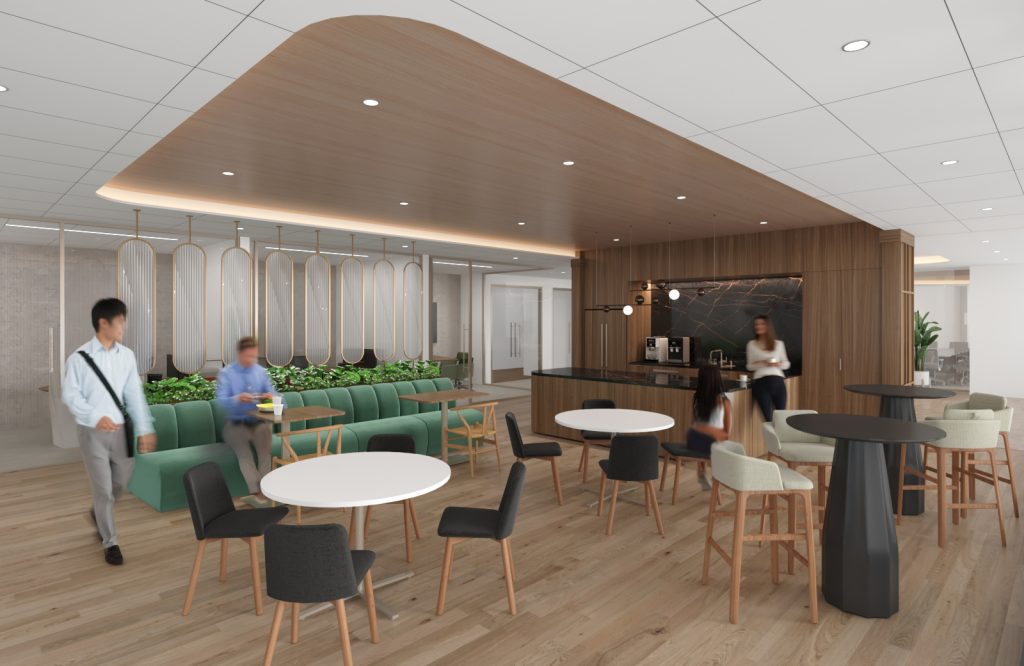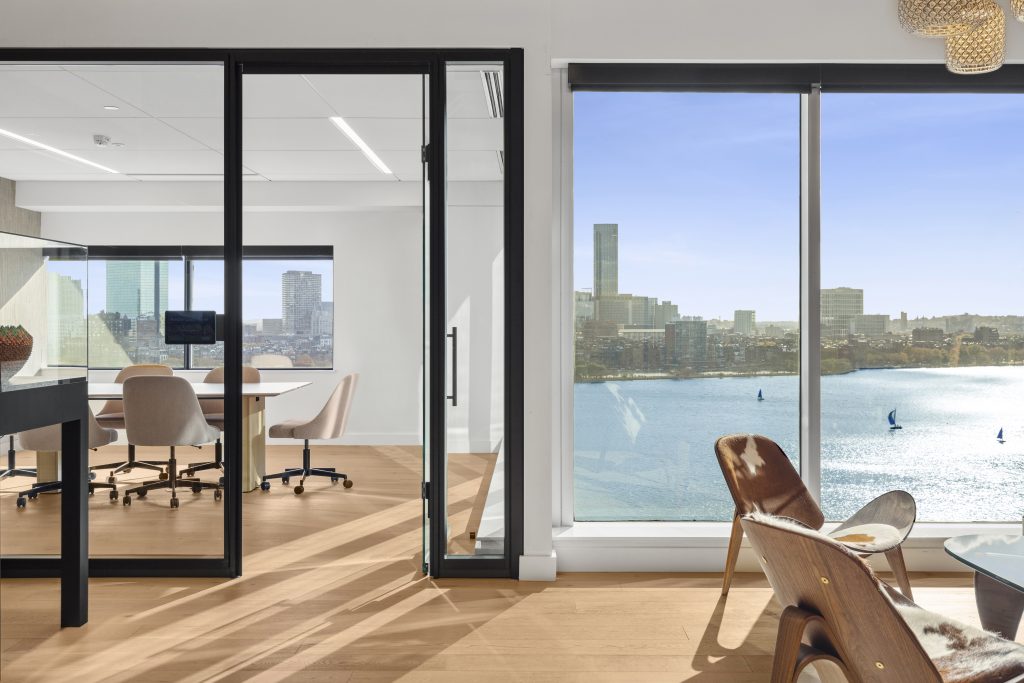Returning contributor Cora Visnick shares how the world of hospitality can inspire next-level workplace design. From intentional arrivals to curated connections, learn how elements from luxury resorts—think The White Lotus—can transform your office into a hub for collaboration, productivity, and the whole self.
Design sectors are co-mingling now more than ever. The resimercial boom; the health and wellness influx into the office. Workplace designers have long looked for clues outside the sector to capture an experience that no longer fits neatly into a 9-to-5. The workplace at its core is a place of productivity, yet it is developing an identity as a hub for human connection and the whole self – a trait that luxury resorts have been acing since the first hotels began welcoming guests. The infusion of hospitality notes into the office is something designers have been thinking about in the past few years. And while certainly the workplace can do without the scripted drama, the sector can learn from the spatial and experiential lessons of the HBO drama, The White Lotus.
Arrival Matters

What does it feel like to arrive at a White Lotus type resort? Ceremonial. Intentional. Warm.
What does it feel like to arrive at the workplace you are designing?
Hospitality spaces often create an emotional onboarding—a series of early moments that give pause and set the tone for the experience within. There is care in how a warm towel feels on the skin or the way a scent evokes a feeling. The equivalent of an “office warm towel” may be more corporate (gone, thankfully, are the days of hand sanitation stations), yet the ceremony of arriving can still be curated by a workplace experience team to set an intention for the workday. How are people ushered into the space from the lobby, elevator, or front door? Is there a serene spot to sip espresso before heading to a calm locker zone and transitioning into the workday? How about a touch-down area to scan the day’s headlines while greeting coworkers?
A unified signage and graphics entry sequence can greet users and visitors alike. Not only should the welcome evoke the design intent of the larger space, but it should also align with the brand experience of the company doing the welcoming. The arrival sets the tone for the office and should be a keystone in environmental graphics and brand strategy integration. Workplace designers must ask and understand what emotions users are invited to experience as they enter and tie design decisions to that end goal.
Curate Happenstance

White Lotus guests drift into moments of connection—they aren’t summoned to brainstorm at 2 p.m. sharp. What if our offices create space for that kind of spontaneity?
Hospitality spaces create social proximity without pressure. Guests may launch into a discussion over a book read at the pool or a shared love of an entrée enjoyed from separate tables in a dining hall. In the workplace, designers can encourage unplanned collaboration by programming spaces that do much of the work themselves. For instance, casual seating clusters around coffee stations create low-stakes social zones. Wellness and retreat spaces for multiple users allow for connecting away from the desk to foster relationships during downtime. Variety helps spark the use of space in new ways, and balancing separation-for-focus with proximity-for-connection builds a well-planned office.

Seamless Transitions

At a resort, especially those featured on this particular HBO show, the connection between indoor and outdoor, public and private, may become almost intangible. At a White Lotus, guests float between guest rooms, cabanas, dining areas, and spa zones with little friction or break in the senses. The experience is whole and true to the greater brand story of the resort, allowing users to fully immerse themselves throughout the day.
Offices, too, are becoming less boundary-driven as flexibility continues to reign supreme in today’s successful workplaces. Some offices may be able to make this indoor/outdoor connection smoothly, relying on long-range vistas, biophilia, and natural daylight. But transitions expand beyond just the outside-in. Meeting spaces that morph or open into town hall gatherings allow office functions to smoothly transition between work hours and after-hours. Private offices that can double as huddle spaces allow for heads-down work to fill the gaps between hybrid meetings—a critical part of most companies’ RTO strategies. The flow between spaces should be designed just as much as the spaces themselves, creating a psychological smoothness and ease in the workday.

The White Lotus comes with more drama than a typical Monday all-hands meeting, but there’s something to be learned from how it fosters humanness. From warm welcomes to unexpected connections and effortless transitions, the hit HBO show reminds us that good design crafts experience, not stale space. If the office can borrow from the hospitality playbook, who’s to say workdays can’t feel more like a five-star stay?


